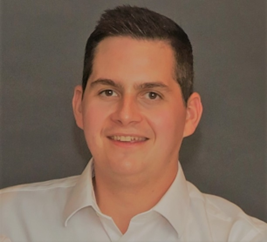UDAR: PAST, PRESENT & FUTURE. AN OPERATOR’S EXPERIENCE AND PERSPECTIVE ON THE CHALLENGES AND OPPORTUNITIES IN APPLICATIONS WITH ULTRA-DEEP RESISTIVITY TOOLS
Northside Houston
Speaker:
Seminar Date: Oct 19 2022
Registration Opens: Sep 16 2022 - Oct 19 2022
Time: 11:30 AM - 01:00 PM (US CDT)
Admission/Registration Link: None
Donation Link: None
Meeting/Webinar Link: None
Contact: Ali Eghbali (VP Northside, SPWLA Houston Chapter)
Corresponding: vpnorthside@spwla-houston.org
Fees: FREENOTES:
Speaker : John Bergeron (BP)
Date : Wednesday, October 19, 2022
Time : 11:30 am – 1:00 pm (US CDT)
Venue : Baker Hughes, 2001 Rankin Rd, Houston, TX 77073
Admission : This activity will include a boxed lunch. The seminar is sponsored by Baker Hughes so there is no charge for registration.
However, you still need to register using the applicable links below.
Parking Info : Guest parking is available free of charge. Upon arrival, please proceed to the front desk to check in
Attendance is limited to 40 person, hence advanced registration is preferred and cut when reaching 40.
Please register by October 17th, 2022 @ 11am to reserve lunch using the above provided link.
Contact : Amer Hanif (SPWLA Houston VP Northside)
Corresponding vpnorthside@spwla-houston.org
ABSTRACT:
Proactive geosteering, landing, geostopping, geomapping and look ahead (LAH) applications of Ultra-Deep Azimuthal Resistivity (UDAR) tools are becoming more common in operator new well delivery practices. In very specific and niche wells, almost exclusively HAHZ, the value of information provided by these tools can significantly exceed the high cost of the service. In the past, UDAR technology was primarily used only for geosteering high value, generally offshore, horizontal wells, where the objective is typically to increase net pay. As time progresses, the application of UDAR has grown past HAHZ-limited applications to now include look around for geomapping and look ahead for geostopping. From an operator’s perspective, the justification for high cost of UDAR is always challenged by not only the uncertainty of what the tool will deliver, but what will be the reasonable actions based on the provided deliverables at the time of drilling. UDAR service companies seem to be in a depth of detection “arms race” but what operators really want is greater understanding of uncertainty with the goal of better well delivery through confident decision making. One way to hedge this risk is to have clear KPI (key performance indicator) based pricing strategy, where vendor pre-drill study claims are tested during and after the drilling and compensation is based on their validation. Another limitation contributing to the underutilization of the UDAR service, and associated operator increased risk exposure, is the present-day inability for operators to verify pre-drill studies, real time inversions, and post drill interpretations via in-house modelling. Modelling is particularly important for the UDAR service where the scientific and mathematical complexity of inversion extends far beyond human intuition. We believe that with the right application and pricing strategies, UDAR could grow past the high-value / high-cost portfolio of the past and be used on a more typical borehole assembly (BHA) in the future. In this presentation, we will discuss our UDAR journey thus far, including reflections on past applications, present challenges and we will propose some improvements, including standardization, that we hope the industry accepts to grow the quality and the number of future applications.
BIOGRAPHY:
John Bergeron is currently the Global Operations Petrophysics Adviser for bp where he oversees data acquisition planning, execution, and supplier integration across bp’s portfolio. Prior to this position, John worked as a petrophysicist in bp GoM supporting both reservoir description and new well delivery. Prior to bp, John worked for Schlumberger wireline. He holds a B.S. in Materials Science and Engineering from Michigan Tech University.
